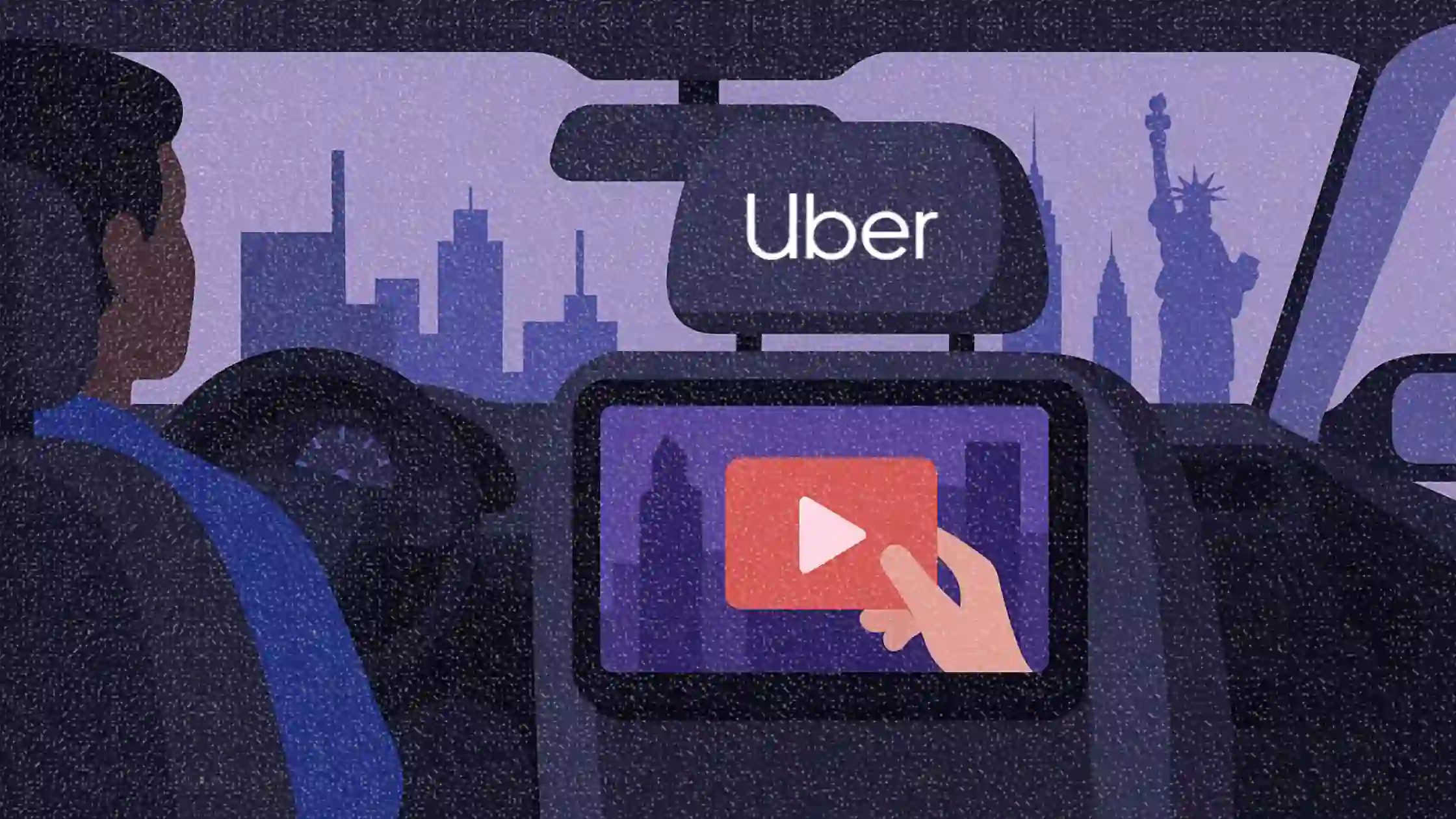Uber will run in-car video ads in NYC rides starting June
Uber will run video ads inside New York City rides starting June, testing whether smarter data can make riders embrace in-car screens.

Uber is bringing backseat video ads to New York City—but with a data-driven twist.
Starting this June, the ride-hailing giant will roll out video ad content via JourneyTV, its in-car ad platform, across Uber vehicles fitted with tablets in NYC.
This move follows a major regulatory shift: last year’s repeal of the city’s ban on in-car advertising for ride-hailing vehicles.
While many New Yorkers have long complained about the intrusiveness of backseat ads—especially from their legacy presence in yellow cabs—Uber is betting that better targeting, contextual content, and new creative formats can change perceptions.
This article explores Uber’s latest play in ad-supported transportation, why New York matters, and what brands should watch as the company scales its media ambitions.
Short on time?
Here’s a table of contents for quick access:
- What’s happening: Uber launches JourneyTV ads in NYC
- Why this market matters
- What marketers should know
What's happening: Uber launches JourneyTV ads in NYC
Uber is officially flipping the switch on in-car video ads in New York City, deploying its JourneyTV network on ride-share screens starting June. Ad formats range from 15 to 90 seconds, plus long-form trailers. These screens are powered by T-Mobile Advertising Solutions, which gained infrastructure and reach through its 2022 acquisition of Octopus Interactive.
Uber’s ad expansion follows a major regulatory reversal by the New York City Council, which lifted a long-standing ban on in-car ads in ride-hailing vehicles. Yellow cabs have hosted similar ads for years, but the law previously barred such monetization for Uber and Lyft drivers.
Now, with the ban gone, Uber can join the fray in one of the most advertiser-coveted cities in the world. NYC’s Taxi and Limousine Commission (TLC) now mandates that 25% of JourneyTV revenue must go to drivers—a key point that helped garner support from regulators.
So far, Uber has deployed JourneyTV in cities like Las Vegas, Chicago, and Boston, with over 150 campaigns launched across verticals like finance, beauty, and CPG. But New York is arguably the crown jewel in this rollout.
Why this market matters
With over 10,000 Uber and Lyft trips a day in NYC alone, this expansion opens a massive new surface area for contextual brand messaging.
Uber’s Head of U.S. and Canada Sales, Jessica Shuraleff, pointed out that the city’s concentration of cultural events—from Broadway to the US Open—offers rich opportunities for brands to connect contextually with consumers in motion.
More than just ad space, these in-car screens are now digital touchpoints backed by Uber’s treasure trove of first-party data. According to Shuraleff, engagement with JourneyTV ads has been high: 98% completion rates and average view times of 120 seconds per ride. Fewer than 2% of riders mute or disable the screens.
Early research suggests there’s potential: IPG’s Magna unit found that 74% of surveyed riders expressed interest in offers they saw during trips, and nearly 70% said it improved their ride experience.
What marketers should know
Uber’s JourneyTV expansion is more than just another media channel—it’s a signal that mobile real-world environments are becoming a key frontier in personalized advertising. Here’s what to keep in mind:
1. Contextual targeting gets local—and mobile
JourneyTV taps into Uber’s first-party data, including past ride and Uber Eats behavior, to surface relevant offers. Think local restaurant recs near a drop-off point or nearby events synced with the time of day. For marketers, this opens up a new way to geo-target mobile consumers without relying on cookies.
2. Rides become conversion zones
Users can tap JourneyTV screens to send offers directly to their phones—no email or code entry required. That means brands can tie awareness directly to action within the ride, turning downtime into conversion windows.
3. Expect creative that blends utility and entertainment
To avoid the fate of annoying yellow cab screens, Uber is trying to make content feel more useful. Campaigns like Kahlúa’s Q4 run integrated JourneyTV, Uber Eats, and in-app ads around late-night cocktail culture, which reportedly drove a 188% sales lift and a 7% bump in bar reservations. The key? Situational relevance.
4. Driver incentives matter
With 25% of revenue earmarked for drivers, this isn’t just an ad product—it’s a retention and earnings play. Brands participating in JourneyTV should be aware of its role in driver satisfaction and Uber’s larger gig economy narrative.
Uber’s JourneyTV rollout in NYC signals that rideshare is becoming the next battleground for contextual, data-powered advertising. For marketers looking to engage high-value urban consumers during idle time, this could be a fresh frontier—if done thoughtfully.
As the format evolves, expect to see more integrations, smarter targeting, and potentially higher CPMs—especially in cities where Uber has the scale and screen saturation to make it work.



